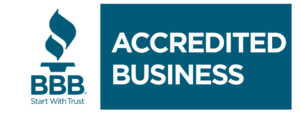Chapter 7 versus Chapter 13: Which Bankruptcy Suits You Best?
One of the biggest challenges of managing your finances effectively is getting educated. When you’re running thin on money, time and patience, it’s extremely difficult to take a deep breath and chart out a recovery strategy.
Learning which kind of bankruptcy best matches your needs is the smartest way to advance in life. Here’s a quick rundown of what Wisconsin residents need to know about how Chapter 7 and Chapter 13 bankruptcies differ.
Essential Bankruptcy Distinctions
Filing for bankruptcy is about getting the perspective and space you need to recover from a bad situation, but there are different ways to go about it. Although chapters 7 and 13 of the bankruptcy code are just two of the many laws that offer relief, they’re the most widely used by regular Americans.
When you seek Milwaukee Chapter 7 bankruptcy, or liquidation, you’re telling the court that you would like to discharge or wipe out your debts to your creditors. After confirming that you are either below median income based upon your family size or pass the means test, which takes into account your 6 months gross income prior to filing the bankruptcy and assessing your case, the court will appoint a trustee who administers your case. Your property becomes part of the bankruptcy estate, but when you file you will use the bankruptcy exemptions on your property, which will allow you to keep it and not have to turn it over to the trustee.
Filing a Milwaukee Chapter 13 bankruptcy, or reorganization, petition lets you signify that you want to resolve some or all of your debts gradually. You’ll need to come up with a three- to five-year repayment plan and get it approved by the trustee and the court. You will pay your creditors some percentage on the dollar, anywhere from 0% to 100% depending upon the nature of your debts, your income, and some other circumstances. Whatever percentage is not paid to creditors will be wiped out when you complete your chapter 13 plan and receive your chapter 13 discharge.
Quick Comparisons
There are many technical differences between Chapter 7 and Chapter 13. For instance, only individuals and sole-proprietor business owners can file for Chapter 13, but Chapter 7 is open to companies as well as private citizens.
Speed
Milwaukee Chapter 7 bankruptcy cases resolve faster than Chapter 13 filings. This is because a chapter 7 case lasts approximately 90 days and a chapter 13 has to run anywhere from 3 years to 5 years to be able to pay your creditors some percentage on the dollar.
Debt Resolution
Both types of bankruptcy let you permanently halt collections by enacting an automatic stay when you file. With Chapter 7, you might not be able to get current on your previous missed payments on secured debts like past due car payments, past due mortgage payments, or tax debts. This can make it harder to avoid actions like foreclosures after the stay period ends. In these instances you would want to consider a chapter 13, in which you pay off your vehicle, your mortgage arrears, and tax debts at reduced or nor interest and late charges and stop any type of foreclosure or repossession.
Debt Types
Milwaukee Chapter 13 bankruptcies and Chapter 7 filings also treat different forms of liabilities in distinct ways. For instance, a Chapter 13 relief-seeker can do things like eliminating unsecured property liens, such as those tied to second or third mortgages.
Feeling confused by all the details?
Everyone’s financial circumstances differ, so it’s critical to assess your situation with professional help. Talking to a dependable bankruptcy attorney at Burr Law Office lets you draw on insights that might make your bankruptcy journey more successful — no matter which type of filing you choose. Call (262) 827-0375 for a FREE bankruptcy consultation.


